Introduction
Introduction
Navigating the housing market as a first-time buyer can feel like walking through a minefield. This First‑Time Homebuyer Guide unveils the hidden expenses many buyers miss, offers strategies to plan ahead, and discusses how current market dynamics in 2025 affect your bottom line. Read on to avoid surprises and buy with greater confidence.
Hidden Closing Costs That Catch Buyers Off Guard
When budgeting for your first home, you naturally focus on the sale price and the down payment. But seasoned buyers know it’s the closing costs that often cause sticker shock. In many U.S. areas, closing costs can run between 2% and 5% of the purchase price.
- Title insurance and title search
- Escrow or settlement fees
- Appraisal and home inspection fees
- Recording and transfer taxes
- Lender origination fees
Some buyers wrongly assume their lender or seller will cover these, but that’s rarely the case by default. For example, on a $400,000 home, closing costs might hit $8,000 to $20,000 depending on location and loan terms.
-
In Staten Island, NY, closing cost norms align with New York state and New York City practices. Buyers should expect to shoulder most of these costs unless negotiated otherwise.
-
In Middlesex County, NJ, closing cost structures are similar, but local county and municipal recording fees, title company charges, and mortgage-related fees can shift the total somewhat up or down.
Pro tip: Request a detailed closing cost estimate from your lender early on, so you can see all line items well ahead of your closing date.
Property Taxes, Insurance, and Rising Premiums
After closing, recurring costs like property taxes and homeowners insurance can surprise new homeowners.
Property Taxes
Your local tax authority sets the property tax rate. In Staten Island, NYC’s property tax and assessment practices apply. In Middlesex County, NJ, your municipality plus county tax rates determine your annual tax bill. Many buyers underestimate these costs by using rough averages.
Homeowners Insurance & Premium Increases
Insurance premiums are rising in many parts of the country in 2025. Climate change, inflation, and greater risk exposures are pushing insurers to increase rates.
-
In New Jersey, average homeowners insurance premiums can run around $1,200 annually (for policyholders without prior claims). But that number can increase significantly depending on location, claims history, and property condition.
-
In New York, rates vary depending on borough, flood zones, and building type; coastal areas and zones with environmental risk often face higher premiums.
Also consider riders or add-ons: flood, wind, or hazard coverages may be necessary depending on your property’s elevation or proximity to high-risk zones. These riders can cost hundreds—or even thousands—more each year.
Maintenance, Repairs, and Unexpected Upkeep
Owning a home means dealing with maintenance and repairs over time. Systems like roofing, HVAC, plumbing, and electrical all eventually wear out.
A generally accepted rule is to budget 1% to 3% of the home’s value per year for maintenance. For a $300,000 home, that means $3,000 to $9,000 annually.
If a major component (roof, furnace, etc.) fails in the first few years, the cost can easily run into the thousands in a single event. Many first-time buyers overlook the need for a “home emergency fund” until it’s too late.
-
In Staten Island, older homes may require more upkeep due to weather exposure, salt air corrosion (if close to water), and building age.
-
In Middlesex County, NJ, seasonal extremes (cold winters, humid summers) can put stress on HVAC and structural elements like siding, gutters, and foundations.

Higher Mortgage Rates and Affordability Pressures
Even if housing inventory loosens slightly, mortgage rates remain high in 2025. The 30-year fixed rate often sits near 6% or more, which eats into buyer purchasing power.
To illustrate: a first-time buyer may need an annual income of $120,000 or higher to comfortably cover mortgage principal, interest, taxes, and insurance. Many buyers misestimate this burden, and overstretching can lead to financial stress.
Local market factors amplify this:
-
In Staten Island, property values and taxes may already be elevated, increasing the overall monthly burden.
-
In Middlesex County, homes in high-demand school districts or desirable neighborhoods can command price premiums, tightening affordability.
How Real Estate Trends Impact First-Time Buyers
Understanding macro trends helps you anticipate challenges. Key dynamics in 2025 include:
-
Moderate home price growth (around 3%)
-
Gradual improvement in inventory after years of scarcity
-
Continued competition from investor buyers and all-cash offers
Given this environment, financial prudence is your strongest defense:
-
Overestimate your closing costs and reserve funds
-
Leave some buffer in your financing approval
-
Focus on local real estate data—neighborhood and ZIP-level trends matter more than national headlines
In Staten Island, local zoning, flood zones, infrastructure changes, and municipal plans can strongly influence housing risk and valuations. In Middlesex County, factors like school district plans, township tax shifts, and municipal development projects can shift values and costs significantly.
Final Tips for First-Time Buyers
-
Understanding macro trends helps you anticipate challenges. Key dynamics in 2025 include:
-
Moderate home price growth (around 3%)
-
Gradual improvement in inventory after years of scarcity
-
Continued competition from investor buyers and all-cash offers
Given this environment, financial prudence is your strongest defense:
-
Overestimate your closing costs and reserve funds
-
Leave some buffer in your financing approval
-
Focus on local real estate data—neighborhood and ZIP-level trends matter more than national headlines
In Staten Island, local zoning, flood zones, infrastructure changes, and municipal plans can strongly influence housing risk and valuations. In Middlesex County, factors like school district plans, township tax shifts, and municipal development projects can shift values and costs significantly.
If you keep the first-time homebuyer guide principles in mind and don’t overlook these hidden costs, you’ll be far more prepared to weather the first few years of homeownership. The market may be evolving, but a well-budgeted buyer can still succeed.
-





